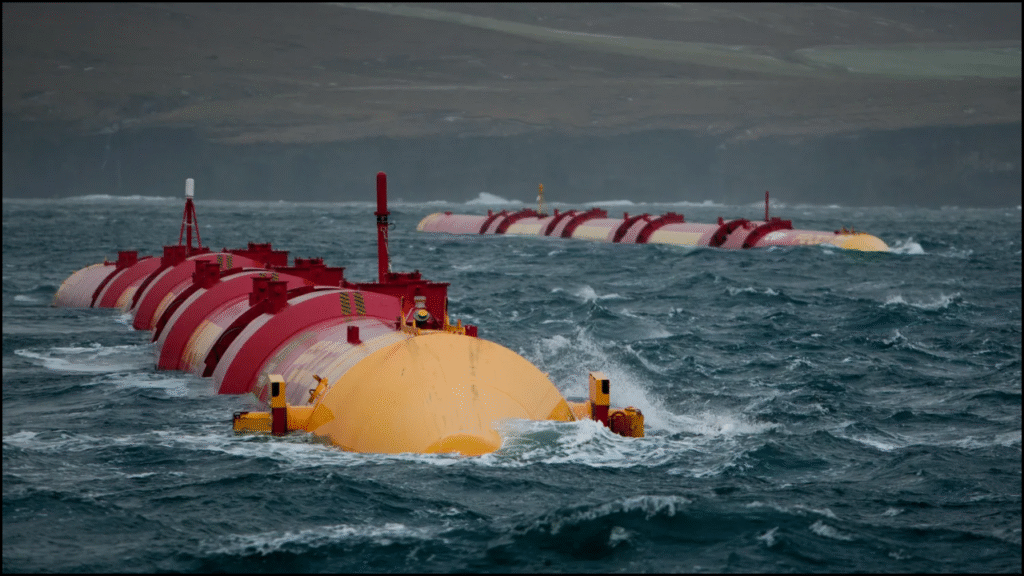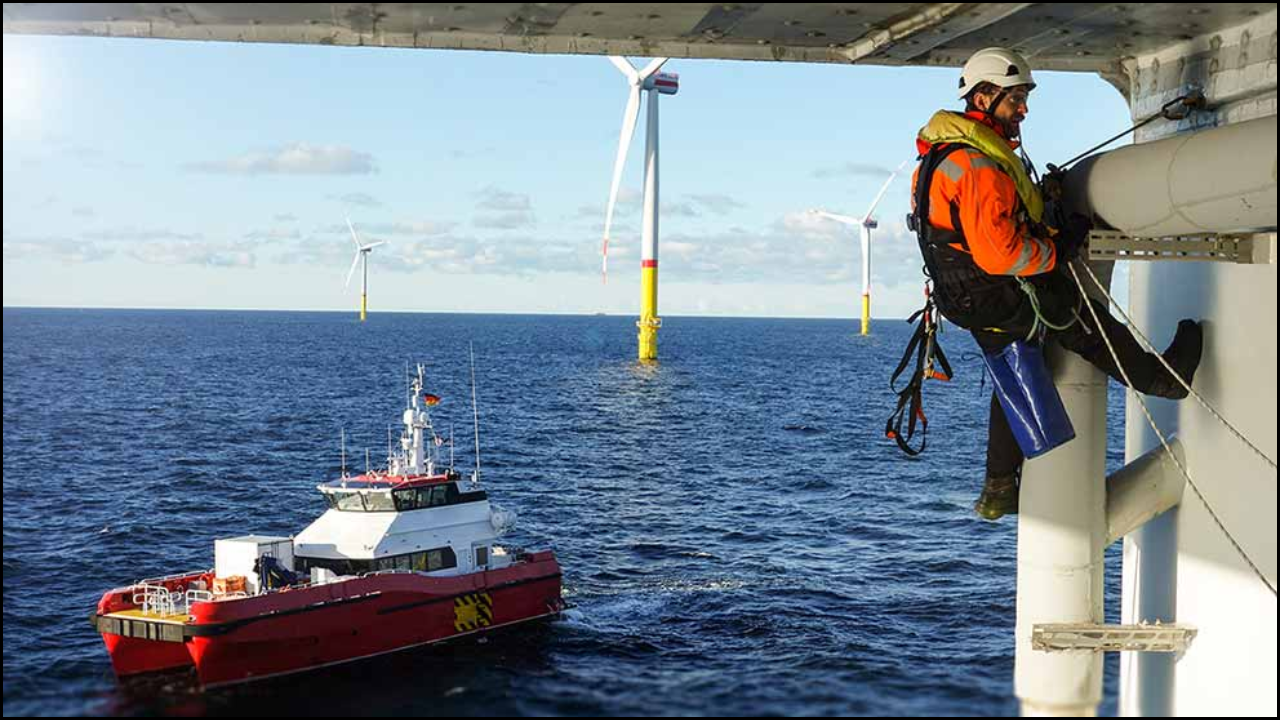
Tidal energy represents one of the most reliable and predictable forms of renewable energy derived from the gravitational pull of the moon and the sun on Earth’s oceans. Unlike wind and solar energy, which fluctuate based on weather and daylight, tidal energy follows a consistent and measurable cycle. This predictability makes it a promising contributor to future clean energy systems. As technology advances, nations across the world are investing in tidal projects to transform ocean motion into sustainable power. The concept of harnessing tides blends marine science, engineering innovation, and environmental stewardship, paving the way toward a balanced energy future.
Table of Contents
1. Understanding Tidal Energy
Tidal energy converts the natural movement of tides into electrical power using specially designed systems and infrastructure.
- Natural Mechanism: Tides occur due to the gravitational forces of the moon and sun acting upon Earth’s oceans, causing periodic rises and falls in sea levels.
- Energy Conversion: Tidal devices capture kinetic or potential energy from moving water and transform it into electricity through turbines or generators.
- Predictable Power Source: Tidal cycles are highly predictable, allowing precise estimation of energy output and grid planning.
- Global Potential: Coastal regions with strong tidal ranges and currents serve as ideal sites for tidal power generation.
Key Characteristics of Tidal Energy
| Feature | Description | Advantage |
|---|---|---|
| Energy Source | Ocean tides caused by gravity | Renewable and predictable |
| Energy Type | Kinetic and potential energy | Dual extraction modes |
| Operation Cycle | Follows lunar and solar patterns | High predictability |
| Ideal Location | Coastal and estuarine zones | Abundant global availability |
2. Major Types of Tidal Energy Systems
Tidal energy can be generated using various methods, each suited to different coastal conditions and project scales.
- Tidal Stream Systems: These use underwater turbines placed in fast-moving tidal currents to extract kinetic energy directly from flowing water.
- Tidal Barrages: Dams built across estuaries trap and release seawater through turbines, converting potential energy into electricity.
- Tidal Lagoons: Artificially created lagoons capture seawater during high tide and release it during low tide for controlled energy generation.
- Dynamic Tidal Power (DTP): Long dam-like structures extend from coastlines into the sea to harness pressure differences created by tidal movements.
Comparison of Tidal Energy Systems
| System Type | Energy Source | Structure Used | Main Benefit |
|---|---|---|---|
| Tidal Stream | Kinetic energy from currents | Underwater turbines | Minimal environmental impact |
| Tidal Barrage | Potential energy from water height difference | Estuary dam | High energy output |
| Tidal Lagoon | Controlled water storage | Artificial lagoon walls | Flexible operation |
| Dynamic Tidal Power | Pressure variation from tides | Long offshore barrier | Large-scale generation |
3. Technological Innovations in Tidal Energy
Innovation plays a critical role in making tidal energy economically viable and environmentally sustainable.
- Advanced Turbine Design: New horizontal and vertical-axis turbines improve energy capture efficiency in low-flow regions.
- Corrosion-Resistant Materials: Marine-grade alloys and composites enhance durability against saltwater and biofouling.
- Floating Tidal Devices: Floating systems reduce seabed impact and enable easy maintenance.
- Hybrid Systems: Integration with offshore wind or wave energy systems creates multi-resource platforms for greater efficiency.
Technological Advancements and Benefits
| Innovation | Purpose | Benefit |
|---|---|---|
| Variable Pitch Turbines | Optimize performance at different flow speeds | Improved efficiency |
| Composite Materials | Resist corrosion and marine growth | Longer lifespan |
| Floating Platforms | Simplify installation and repair | Cost reduction |
| Hybrid Installations | Combine tidal, wind, and solar systems | Maximized power output |
4. Global Tidal Energy Projects
Many countries are pioneering tidal energy projects to explore their full potential as part of sustainable energy portfolios.
- The United Kingdom leads with the MeyGen Project in Scotland, the largest operational tidal array in the world.
- France established the La Rance Tidal Power Station, one of the earliest and longest-running tidal plants.
- South Korea operates the Sihwa Lake Tidal Power Station, showcasing advanced barrage technology.
- Canada and Norway invest heavily in tidal stream research for coastal energy independence.
- China and India are emerging players exploring tidal lagoons and estuary-based installations.
Prominent Tidal Energy Projects Worldwide
| Project Name | Country | Type | Capacity (MW) | Notable Feature |
|---|---|---|---|---|
| MeyGen Project | United Kingdom | Tidal Stream | 6 | World’s largest tidal stream array |
| La Rance | France | Tidal Barrage | 240 | Oldest operational tidal plant |
| Sihwa Lake | South Korea | Tidal Barrage | 254 | Largest capacity globally |
| Fundy Ocean Centre | Canada | Tidal Stream | Pilot | Testing advanced turbine prototypes |
| Zhejiang Project | China | Tidal Lagoon | 30 | Innovative hybrid tidal technology |
5. Environmental and Economic Impacts
Tidal energy offers multiple advantages for environmental sustainability and economic growth while also presenting challenges that require careful management.
- Low Carbon Emissions: Electricity generation from tides produces negligible greenhouse gases.
- Marine Habitat Consideration: Turbine placement requires assessment of marine biodiversity and fish migration routes.
- Job Creation and Local Industry Growth: Tidal projects promote new employment in coastal regions for engineering, construction, and maintenance.
- Long Lifespan: Tidal structures can operate for several decades with minimal performance degradation.
Environmental and Economic Overview
| Aspect | Positive Impact | Consideration |
|---|---|---|
| Emissions | Zero direct CO₂ emissions | Monitoring equipment footprint |
| Marine Ecosystem | Artificial habitats around structures | Avoiding habitat disruption |
| Employment | Boost in coastal job opportunities | Skilled workforce training |
| Operation | High predictability and long lifespan | Periodic maintenance costs |
6. Challenges Facing Tidal Energy Development
Despite its promise, tidal energy faces obstacles that slow down its widespread adoption.
- High Initial Costs: Infrastructure, installation, and grid connection remain expensive compared to wind and solar projects.
- Environmental Concerns: Potential effects on marine ecosystems and sediment transport require extensive research.
- Limited Suitable Sites: Not all coastlines have sufficient tidal ranges or currents to make projects viable.
- Maintenance Complexity: Harsh marine conditions complicate repairs and increase operational costs.
Key Challenges and Possible Solutions
| Challenge | Proposed Solution | Expected Outcome |
|---|---|---|
| High Capital Cost | Government incentives and R&D investment | Reduced financial burden |
| Environmental Risks | Use of eco-friendly turbines | Lower marine disruption |
| Site Limitation | Advanced site modeling and mapping | Broader feasibility range |
| Maintenance Issues | Modular and remote-monitoring systems | Efficient operations |
7. The Future of Tidal Energy
The future of tidal energy depends on continued innovation, investment, and global cooperation.
- Technological Maturity: Cost reductions through mass production and design standardization are on the horizon.
- Integration with Smart Grids: Predictable power generation will complement variable renewable sources for stable grid performance.
- International Collaboration: Shared research initiatives and funding programs will accelerate commercial deployment.
- Hybrid Ocean Energy Systems: Combining tidal with wave and wind energy will create multi-functional offshore power platforms.
Future Outlook for Tidal Energy
| Focus Area | Development Path | Global Benefit |
|---|---|---|
| Cost Reduction | Scalable technology and innovation | Affordable renewable energy |
| Energy Integration | Smart grids and hybrid systems | Reliable electricity supply |
| Policy Support | International funding and subsidies | Increased project deployment |
| Sustainability | Eco-friendly design optimization | Long-term ocean conservation |
Key Takeaways
Tidal energy stands as a remarkable example of how natural ocean forces can be transformed into dependable, clean power. Its predictability, longevity, and sustainability give it an edge among renewable energy sources. Although challenges such as high costs and environmental management remain, ongoing innovation and international partnerships continue to push the technology toward commercial readiness. As coastal nations harness the rhythmic motion of the seas, tidal energy is poised to play a vital role in shaping a greener, more resilient global energy future.





